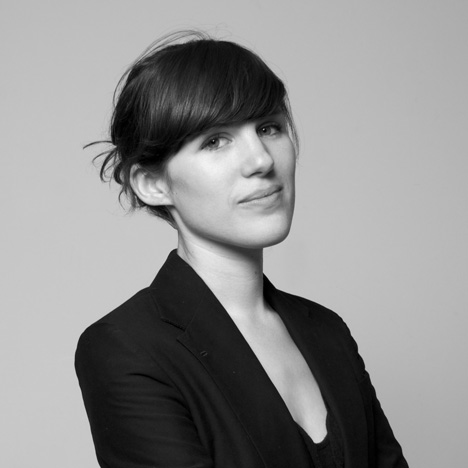
"Exhibitions are places to be occupied, not just things to be observed" - Beatrice Galilee
Lisbon Architecture Triennale: following budget cuts, boycotts and lukewarm reviews, Lisbon Architecture Triennale curator Beatrice Galilee defends the event that opened in the Portuguese capital last week and explains why she believes architecture exhibitions don't always need to be about buildings (+ interview).
"Architecture exhibitions don't deal with the real experience of architecture; they deal with the design and concept of architecture," Galilee told Dezeen. "Exhibitions are places to be occupied, not just things to be observed. [This] was an opportunity to push the boundaries of what an architecture exhibition can be about and about how it could be presented."
Legendary Portuguese architect Álvaro Siza was reported to have snubbed the opening festivities of the triennale, which deliberately avoids focussing on the country's globally renowned older architects and which challenged the orthodox approach to the curation of architectural exhibitions.
"It's an event for the next generations of architects in Portugal not for established practitioners. We didn't really compromise on that," Galilee said.
With Portugal's economy in crisis, the event's budget was cut by 50% and almost cancelled entirely a few weeks before the opening. This, together with a curatorial approach that eschewed the presentation of buildings in favour of more installation-like exhibitions, left some reviewers disappointed. The Guardian's architecture critic Oliver Wainwright described much of the work on show as "entirely baffling" while RIBA Journal editor Hugh Pearman said it "feels like a student show" and was "too much hard work".
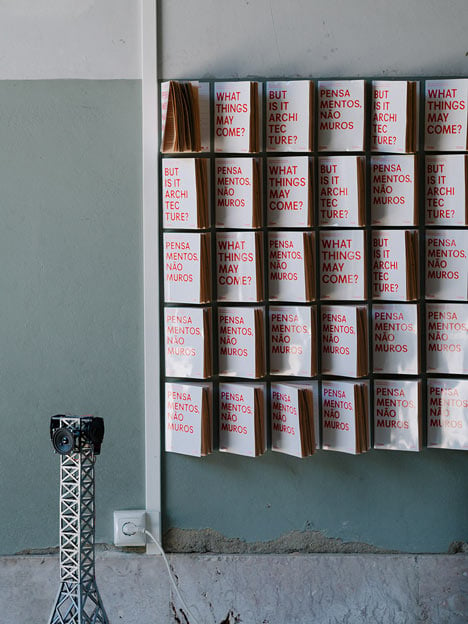
Galilee set out her strategy for the triennale last year in an interview with Dezeen. The traditional approach of putting architectural models on plinths was "just not good enough any more," she said at the time.
Working alongside curators Liam Young, Mariana Pestana and José Esparza, Galilee presented a series of exhibitions that focus on public participation, rather than on exhibiting spaces and structures. Instead of showcasing the work of Portuguese masters, she chose to focus entirely on young architects and studios, a move that has prompted a "wall of silence" from established architects such as Siza.
"I think it's a shame for the Portuguese architects involved that they don't have the support of their masters," she added. "But it's not something that particularly keeps me up at night."
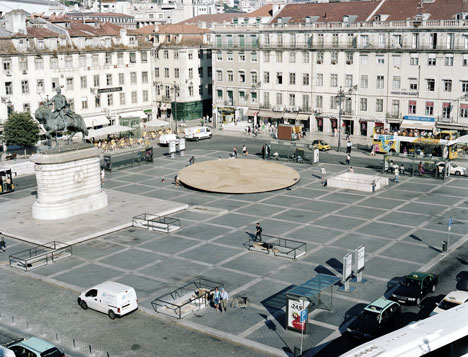
She also explains that her concept to not involve any famous architects was one of the reasons she was chosen as curator.
"We made the discipline of architecture our focus, not Portuguese architecture," she said. "The discipline of architecture in Portugal is really cherished around the world. We wanted to do something different that would be appropriate for this time."
The Lisbon Architecture Triennale runs at venues across the city until 15 December 2013: www.close-closer.com/
See all our coverage of the Lisbon Architecture Triennale 2013 »
Read the full interview below:
Amy Frearson: Can you tell me about the history of the triennale?
Beatrice Galilee: The first one in 2007 was founded by a group of architects who went to the Sao Paolo Biennale and realised there weren't any biennale structures in Portugal in architecture, any independent institutions of architecture in Portugal, so they founded the triennale. The first edition was quite traditional, it was comprised of exhibitions and a massive conference. It was quite well funded and I actually attended that as a journalist. I felt like it was quite an expensive conference, it was held in the expo area of Lisbon. It was kind of a success in the fact that it happened, but it wasn't particularly original.
The second edition had a chief curator from the art world. Again, that was quite a major production involving a number of other institutions in Lisbon and looked at art and architecture, but the overall scene was talking about houses.
The previous two editions were quite internal, involving almost everyone on the Portuguese architecture scene. So for the third edition, they decided to have an open call and not choose somebody from within the same pool of people. They just decided to make it more international.
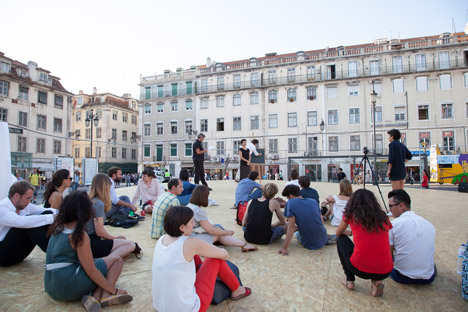
Amy Frearson: What are your aims for this one?
Beatrice Galilee: I applied with a proposal to look at all the ideas around architecture. Architecture exhibitions don't deal with the real experience of architecture; they deal with the design and concept of architecture. So I wanted to look at all the other work and disciplines that influence architecture and disciplines that architecture is influenced by. They were really happy because I didn't have any famous architects in my proposal or my curatorial team, so that's one of the reasons they said they chose me, as well as because I'm British, again because they wanted it to be something more international. So I applied with that team, with Liam Young, Mariana Pestana and José Esparza. They asked for three exhibitions and a public programme as part of the proposal so it was quite defined from the beginning - what I was and what I wasn't allowed to do.
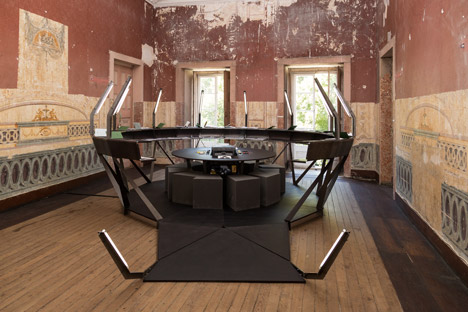
Amy Frearson: Can you tell me a bit more about the theme Close, Closer?
Beatrice Galilee: As a group, the idea was to explore the alternate universe of architecture, beyond the aesthetics and proportions that architects deal with; to try and be more public and open about an exhibition. So it was an opportunity to push the boundaries of what an architecture exhibition can be about and about how it could be presented.
We're not representing architecture, we're presenting it; exhibitions are places to be occupied, not just things to be observed. So thats the kind of big shift we've tried to explain to people: it's not about demonstrating projects but about commissioning spaces and places that are used and occupied during the triennale.
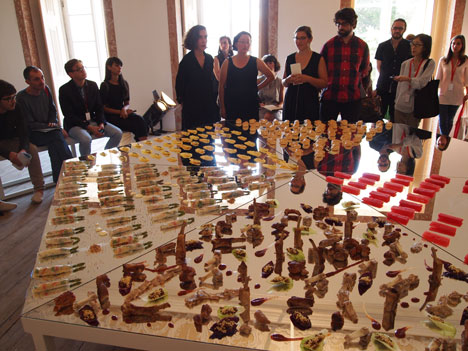
Amy Frearson: Can you give me some examples?
Beatrice Galilee: We made this huge stage in Casa de la Figera to host our public programme. Afterwards will be occupied by various different people and groups; there will be a skateboarding competition on it, a university public programme, a number of associations and institutions have asked to use the stage, even a horse riding group want to use it. It's a public programme in that sense; the idea is that its about the city.
The same with The Real and Other Fictions exhibition [a series of installations that explore the former uses of an old palace]. It works on several different levels. It has to be occupied, it has to be used as architecture does. We wanted to explore not just what an architecture exhibition could be but how architecture is understood. Its not about showing ideas that happen elsewhere, its not really that kind of design.
The exhibition The Institute Effect is a kind of homage to the institution. Institutions play a huge role in the field of contemporary architecture, and the individuals behind the institutions become the people who make the decisions about the landscape of architecture. Instead of showing what it is that they do, we're inviting them to come and make a public programme for Lisbon. So it's kind of an embassy or season of institutions that keep putting on festivals and talks. The idea is that as a triennale, we're not international curators that come in and leave again. It has an element of time to it, it sinks in and works for a city, works for people who take time to come back to it and make use of that intelligence and those ideas.
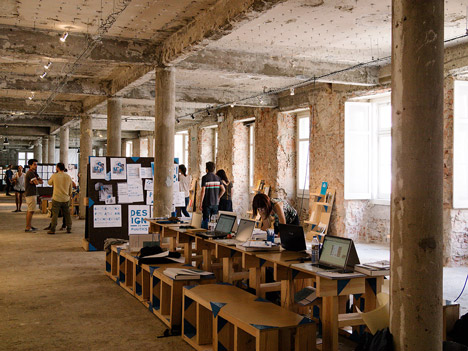
The Future Perfect is a kind of experience, an opportunity to walk into someone else's dream about the visual and aesthetic shape of the future, as well as the atmosphere around it. The programme is a combination of who else is responsible for architecture, what else architecture is. Can we present that in a new, innovative and exciting way?
Alongside that there were other programmes. Associated Projects was a call for anyone to be a part of the triennale, that was also really exciting because it made the triennale into a platform for other people's projects. We had 100 associated projects, which ranged from architecture installations, a run, urban walks, coordinated clothes wash and research into the pedagogical systems of architecture. Not only did we commission the people we did, but we were also able to commission other people to talk about what they really wanted to.
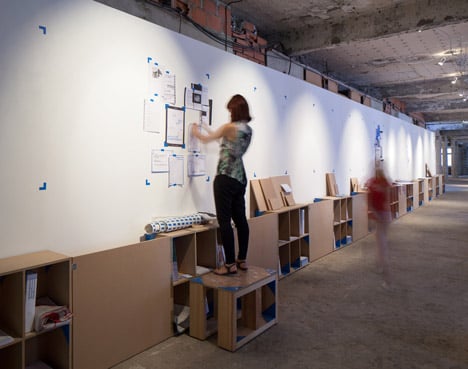
Amy Frearson: How has the establishment reacted to the programme?
Beatrice Galilee: Because the first two triennale exhibitions had been so heavily influenced by Portuguese architecture, I think people felt that the Lisbon Architecture Triennale was an opportunity to promote Portuguese architecture to the world. I think there was an expectation that the third one would do it again. Because we made the discipline of architecture our focus, not Portuguese architecture, I think people were unsure of what their place was in this event.
Ultimately it's an event for the next generations of architects in Portugal not for established practitioners. We didn't really compromise on that. We thought maybe we should do an exhibition for the older generation so that they don't get upset, but we decided that sometimes you have to take a position. We wanted to do something that would supported a different type of architecture practice, a bit more about exploration and invention than about famous names. Because I don't think there's really a gap in the market for exhibitions on Portuguese architects because they're so famous and so well known. The discipline of architecture in Portugal is really cherished around the world. For example there was an exhibition of Portuguese architects in Montreal and last year at the Venice Biennale and in Milan. We wanted to do something different that would be appropriate for this time.
So in terms of animosity, its kind of more like a wall of silence from that generation rather than explicit animosity because no one has criticised me personally. That's what I have experienced personally and I don't know what they think.
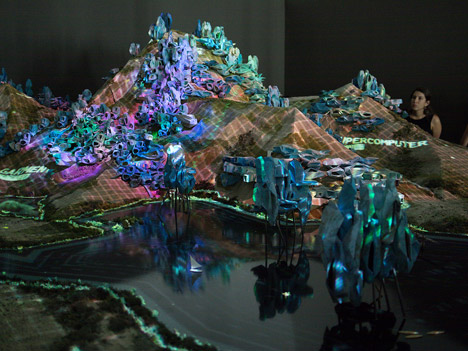
Amy Frearson: It's rumoured that Álvaro Siza deliberately left the city because he he hadn't been involved.
Beatrice Galilee: Yeah he went to Milan for the launch of the new Domus magazine. There was a comment in one of the exhibitions saying: "Why have you gone to Milan?" It's a bit of a shame really. I can't imagine British architects being like that if they' weren't involved in London Festival of Architecture or Italian architects behaving like that if they weren't in the Venice Biennale. Its a shame because they're on the board of the triennale. I think it's a shame for the Portuguese architects involved that they don't have the support of their masters. But it's not something that particularly keeps me up at night.
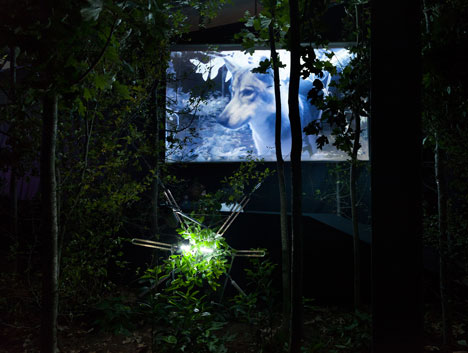
Amy Frearson: The biggest issue affecting Portugal today is the economic crisis. How has the triennale addressed that?
Beatrice Galilee: In some ways we adjusted by simply managing to exist. The crisis-buster grants [funding given to ten projects that benefitted local communities] were really a direct response to the crisis. It was a real pleasure to see so many of them, such as an ice cream van pulling up, and all of the projects that were made with our grants that were popping up and were really excited and were working really well. It was great. The public programme is really trying to address that.
There's one practice campaigning for Portuguese architects to stay in Portugal. And that's their message - don't leave, your ideas are needed here and you're needed here. Your thinking is needed here. You can change the city, don't leave. And thats a really powerful message from a young Portuguese practice. They want their colleagues and their collaborators to think twice before they go to leave to get work in other countries.
So of course the programme isn't entirely devoted to discussing the crisis, but there's loads of really exciting things that come out of it. Some people say you're almost glorifying the crisis but it's not the case at all. We're trying to be really productive and proactive. I think that's the good thing that happens when people come together, you can get inspired and get ideas and a lot of the programme is almost trying to design those moments of conversation like what can we do together, as a group, as a generation, to stop architects leaving the country.
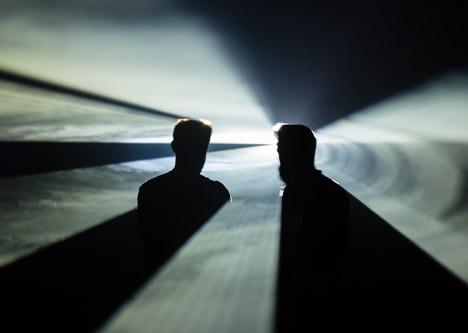
Amy Frearson: Was your budget cut?
Beatrice Galilee: I think we ended up with less than 50% of what we started with which is pretty drastic. About five weeks before the opening there was a strong chance the whole project would have to be cancelled or at the very least radically redesigned, but we fought hard to keep our original ambitions - albeit with some sacrifices - so I do feel a huge sense of achievement that anything happened at all.
There were some major issues of funding and probably with a bit more money would have been totally different, but I'm really proud of the curators and participants and the triennale team who slogged and slaved and made huge sacrifices to make what I think is an incredibly special, unique programme. If we had known the final budget when we started it would have been a totally different animal, but it's a programme and a project that exists in spite of everything.
Although I know the process and the cuts and so on isn't that interesting to everyone, I am amazed that we did it and there are no regrets at all. We did it, its opened and it happened. Of course there are more things that if we had more money we would have done, but then we could also have not done anything at all.